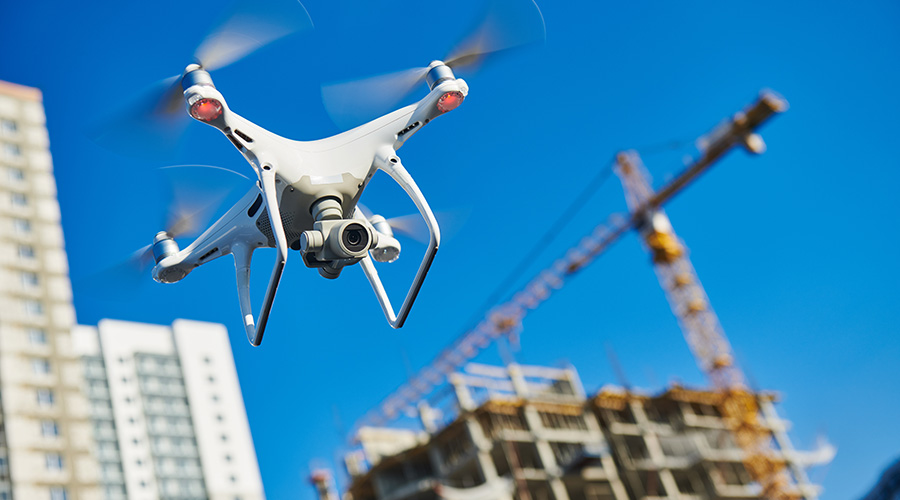Gameplan for Productivity
Managers offer strategies for defining, assessing, measuring and, ultimately, increasing productivity
Defining productivity can be a slippery task. Attempting to increase productivity can be even more difficult. For example, if managers mistake efficiency for productivity by attempting to increase work-order completion rates, they might sacrifice work quality. And if managers attempt to cut costs by specifying cheap, prone-to-fail equipment, they again might forsake productivity in order to meet budget requirements.
In today’s economic climate, defining and then improving maintenance and engineering productivity is essential to an organization’s health. To do so, managers need to arm themselves with select CMMS modules at their disposal, usually information about cost data, work tracking and inventory.
Also essential is a crop of motivated employees who take ownership in the organizational mission. But even with these tools, to aim for productivity without proper forethought — or with the wrong definition of productivity — is to invite disaster.
Defining Productivity
For these reasons, Don King, director of maintenance operations/consulting services for the Kaiser Permanente Foundation, says the essence of productivity varies depending upon who is defining it. King’s definition is, by his own admission, “a formal and idealistic view.”
“I define productivity as time spent accomplishing the mission of the department,” he says. “It’s not just wrench-turning time.”
Therefore, technicians who spend time reading manuals or enrolled in certification classes are being productive, says King, adding that one quick way managers can determine productivity and identify unproductive workers is with log sheets.
“When you’ve got a guy who lists his two 15-minute breaks, plus a half-hour lunch, and lists the other 71/2 hours as working, that’s a red flag that he’s not being very productive,” he says. Workers should spend some time every day increasing their knowledge to help further boost productivity.
Administrators at the Federal Way School District in Washington have adopted a similar, if unconventional, definition. Rod Leland, director of facility services for the district, also rejects standard performance and productivity metrics such as maintenance costs per square foot or per employee, preferring instead to establish the maintenance mission of the district as a self-directed group.
“I’ve given a lot of thought to productivity in the 23 years that I’ve been here," Leland says. “I guess I’d borrow the just-in-time phrase from materials delivery to help define our own productivity concept of ‘just enough’.”
But the concept that Pieter van der Have chooses to help define productivity is efficacy.
“We use callbacks to determine productivity and whether or not our workers have been effective,” he says. Van der Have, the University of Utah’s associate vice president for facility management, also says that managers cannot fully define productivity without considering the effectiveness of their workers.
Using Metrics
If defining productivity is a slippery task, then defining productivity without any use of metrics is slipperier still. That is why King, van der Have and Leland have developed their own productivity gauges.
“If you’ve got a computerized maintenance management system, set it up to include all productive aspects of work,” King says. Productive work includes education and reading about standards or design manuals, in addition to actual maintenance work.
Leland says his district uses a work-tracking module to help assess the productivity of his workers. But Leland doesn’t supervise them in any traditional sense.
“They know we’re not going to mother them,” he says. “A critical aspect of our employee productivity is having each employee understand why they are here. Productive workers need to have a high-level of mission understanding.”
The two maintenance administrators who work with Leland have significant combined maintenance, construction and engineering experience. Leland says that together, they usually can assess what is productive and what is not.
“We also contract out some work if we’re unable to cover it all and can help use their information to establish standards, but essentially we know that it should, for example, only take about an hour to install a faucet,” he says. “If one of my guys takes four hours to do it, we know that there’s probably something wrong.”
Leland adds that he conducts annual performance reviews for most employees. For those who do not perform adequately, Leland and his administrative staff might call workers in as frequently as every month to help shape performance.
But even if many managers don’t use work-order tracking to determine productivity, van der Have says work orders contain some information that’s useful to gauging productivity.
“One of the most scientific ways I know of to assess productivity is to compare actual versus estimated work times,” he says. Like King, van der Have also stressed the importance of training and certification.
“Skills training is essential for productive workers, but often it gets ignored, especially in our tight budget environment,” he says.
Assessing the department
Before attempting to increase productivity, maintenance and engineering managers need to assess their department’s current level of productivity.
Dick Meador, manager for the decision support for operations and maintenance program at the Pacific National Laboratory in Richland, Wash., categorizes productivity into four levels:
Survival. In a low-productivity environment, the goal is survival. Chronic operations and maintenance problems will plague such an organization, and low-reliability or outright equipment failures characterize this category.
Adequacy. Uncertainty might characterize this category, but the department is keeping equipment running. Low efficiency and low productivity are classic traits of this category.
Accuracy. Departments in this segment are secure in their knowledge of operating and maintaining their facilities but would like better performance measurements and want to know how their operations and maintenance affect facility processes.
Optimized. These departments know the slope of their performance curve. They search for ways to optimize the state of an already effective maintenance process.
Once maintenance and engineering managers know what category their department belongs in, they need to develop management tactics that increase worker productivity.
Increasing Productivity
At Kaiser Permanente, King says workers use a fair amount of leading technology. Because of this, King also places a great deal of trust upon the shoulders of individual workers.
“I expect them to take risks, within certain boundaries,” King says. “Because they’re often using cutting-edge technology, I expect a certain level of failure. They know that this is okay — as long as they don’t go outside our pre-existing boundaries.”
Leland uses a similar technique to empower workers.
“We’re the sixth largest district in a state with 300 districts, yet we rank in the lowest 20 percent in the state in terms of our resources,” he says. “So I’ve got to expect productivity from my workers. We expect a high level of competence from them in their work and their customer service.”
To build this trust and empowerment, Leland lets individual workers order from vendors, and he makes the workers individually responsible for client projects. Van der Have says the way to boost worker productivity is not via wages.
“You’ve got to get the workers to assume some kind of ownership, and this is one of the perpetual challenges of the job,” he says. “Most technicians tend to see a pump as just a pump. To make them more productive, you’ve got to help them see that the pump is actually one component of a larger entity.”
Technological Aids
New technology often comes to market with the promise of increasing maintenance productivity or efficiency. Leland agrees that some technology can improve productivity but says that generally, the best use of technology is to help organize work tracking. CMMS are vital to most maintenance departments, and managers with an eye on productivity can use individual modules to help track costs, work order completion and inventory supplies.
“But technology doesn’t affect productivity as much as you might think,” Leland says, although he adds that his workers receive work orders electronically.
And the transmission of information seems to be the one way all managers agree that technology can improve the productivity of the maintenance mission.
“Technology is wonderful when it supplants existing maintenance activities or streamlines the transfer of information,” King says.
Meador says many organizations implement technology designed to boost efficiency or productivity, yet the implementation has not resulted in long-term improvement. Productivity and efficiency enhancements, he says, can be fully realized only when technological enhancements are approached from a global and life-cycle perspectives. King agrees.
Says Meador, “It’s possible to accomplish more work with diminished resources if you don’t forego long-term benefits.”
Related Topics:











